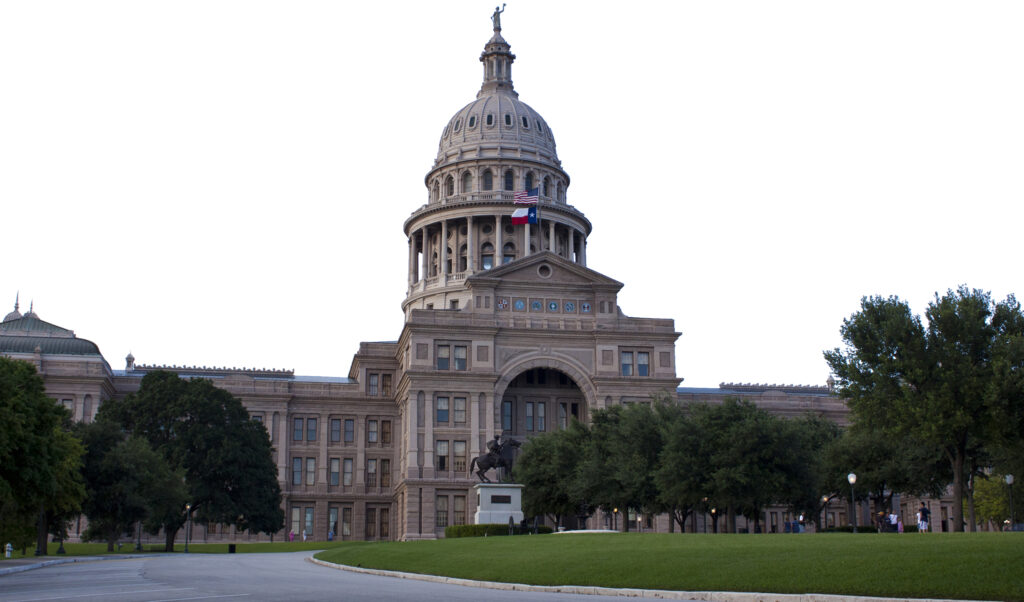It should surprise no one that “Everything is bigger in Texas” was propagated as much by people outside the state as from within it.
When you’re in Texas, surrounded by its mystical pieces and places, it’s just Texas. When you go elsewhere, or when others visit, the comparisons become obvious.
Texans, and frankly, most other people, know “Everything is Bigger in Texas,” both real and imagined. While it may have roots in the enormity of our geographical area, historically, it goes much deeper than that.
The culture of Texas involves concepts of rugged individualism, self-reliance, hard work, and being a good neighbor. As part of that outward individualism, we have giant hats, big hair, big boots, enormous ranches, and tall buildings.
On the inside, there are plenty of big personalities, big egos, and no where else on the planet can you say, “Remember the…” without someone knowing how to finish it. All because a small army of Texans showed the world that we knew how to fight for independence. It’s also worth noting that Larry “J.R. Ewing” Hagman was a Texan. All these layers play into a mystical Texas “thing”, generated from the beginning of our history and greatly expanded, and happily self-propagated, in movies, music, and television.
EARLY SIGNS
In 1906, the Association of American Nurserymen had a conference in Dallas. The keynote speaker opened with this story*.
A Texas nurseryman was in New York talking with a New York real estate man. They were going down the street when the New York man happened to spy some very large pumpkins on the other side of the street.
“Now, just gaze upon these,” he said. “Have you got anything in Texas to beat that?” The Texas man said, “What are they, cantaloupes?” The New York man said, “Now, look here, I know you Texas people have got nerve, but you haven’t the nerve to tell me that cantaloupes grow that big in Texas.” The Texas man said, “Then what are they?” “They are pumpkins.” The Texas man said, “Why, hell, fellow, the seed get that big in Texas.”
Don’t misconstrue the things they say to you. When [a Texan] starts talking to you in a manner, which in any other country would be called boasting, remember it is not boasting in Texas.
*Proceedings of the 31st Annual Convention of the AAN; Commercial Club, Dallas, June 1906.
TRULY BIGGER
- The Texas State Capitol is nearly 15 feet taller than the U.S. Capitol, and larger in area than any state capitol.
- The San Jacinto Monument is 12 feet taller than the Washington Monument.
- The area of DFW Airport is larger than all of Manhattan Island in New York City. Our largest wind farm is 4-1/2 times bigger than Manhattan.
- Three of the ten largest stadiums in the nation are in Texas; Kyle Field-Texas A&M, Texas Memorial Stadium at UT, and the old Cotton Bowl. (If you count standing room, Cowboys’ stadium is #4.)
- The Texas economy makes up nearly 9 percent of the nation’s GDP. At $1.43 trillion, it is 13th in the world.
- Texas has enough crude oil reserves to fill up more than 1,400 Empire State Buildings.
- The King Ranch is bigger than Rhode Island.
- Broom, Texas is home to one of the world’s tallest freestanding crosses. At 190 feet, its shadow is visible from space.
- Lakewood Church in Houston has 52,000 weekly members.
- Big Tex (facing page) is 68 years old, and is the tallest Texan. He is 55 feet tall, wears size 96 boots and a 95-gallon hat. His jeans weigh 100 pounds.
- If you drive from Dallas to Los Angeles, 12 of those 24 hours are on Texas roads.
- By population, 6 Texas cities are in the top 20 in the U.S.
- There are three electrical grids in the United States; East , West…and Texas.

Thanks to our history of self-determination, energy independence, and the culture and romanticism of the Old West, Texas is deserving of its iconic nature, and the unique picture it paints.
But why?
Texas is a huge chunk of land. In fact, it is 7.4% of the total U.S. area — or double the ten smallest states combined. At one time, Texas territory included a major portion of New Mexico, the panhandle of Oklahoma, and a big piece of Colorado edging toward Wyoming. So, technically, the current Texas is comparatively smaller than even Texas used to be.
When oil lured people from failing mid-west industrial complexes, the prevailing attitude of the rushers was that Texans “were too dumb to know what can not be done, so they just went ahead and got done what everyone else knew was ‘impossible.’” That can-do attitude was part of Texas culture borne out of being under, and gaining independence from three foreign nations prior to becoming a sovereign nation, and later, a U.S. state. Even the Federal Government has to ask Texas’ permission to build on public land. No other state has a history like that. Being proud about that is also part of being Texas.
Can-Do
The City of Houston created one of the largest seaports in the United States — 50 miles from the ocean. When the weather became too hot and humid to watch professional football comfortably, Houston built the first air conditioned football stadium.
Perhaps because it takes a long time to drive across Texas, State Highway 130 has a 41-mile section (which goes through Georgetown) with a marked speed limit of 85 mph; the fastest in the nation.
Still, if you must ponder the fact that the Northwest has bigger trees, Florida has better beaches, Arizona has the biggest canyon, and Alaska’s tallest mountain is more than twice as tall as ours, remember… the U.S. Census Bureau says more than 1,000 people move here. Every. Day. So bigger here or not, a lot of people want a piece of it. ‘Nuff said.

